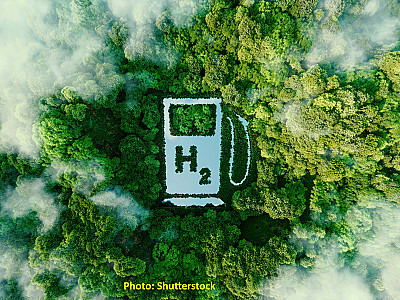Paving The Path To Sustainability: The Rise Of ESG
A step closer to a more sustainable future led by ESG.



Commitment to the Net Zero target among businesses, from large corporations to mid-sized businesses, is growing.
For example, Apple has committed to 100 percent carbon-neutral supply chain and products by 2030. In another industry, Nissan Motor demonstrates its determination to eliminate carbon dioxide emissions from its global manufacturing sites by 2050. The automobile company has planned to switch to more environmentally-friendly sourced electric equipments and vehicles.
This shift toward sustainability is not surprising. In fact, a number of studies show that this trend will not only continue, but will also be rapidly adopted by many companies in 2023 and beyond.
Even though a number of companies have started to apply the concept of sustainability in their business model, many others are perhaps still confused about the meaning of sustainability itself.
In business, sustainability means a business does not give a negative impact on the environment, community, or society as a whole. Moreover, a sustainable business model has a goal to help restore nature and society to a better condition than before.
Thus, we can say that a sustainable business model refers to a company's plan to generate profits in a method that protects people and the environment simultaneously.
The benefits of sustainable business models lay beyond simply protecting nature and society. They also have positive impacts for the business itself as well.
Innovating and running your company in a sustainable manner demonstrates strong values and high integrity in doing business, according to a Big Bang Partnership article. In addition, a study by Nielsen shows that 66% of consumers will buy more of a certain company's product if said company supports the concept of sustainability.
Another study by McKinsey also found that there is a significant correlation between the efficient use of a company's resources and the stability of its financial performance. In fact, they believed applying the concept of sustainability can reduce resource costs and increase operating profit by up to 60%.
What steps are necessary to launch and sustain a sustainable business model?
We can create a sustainable business model by implementing several particular procedures and sustainable strategies.
You can begin by dissecting your products and services offerings first to find "problematic, unsustainable, and waste-generators" parts of your system. From that point onward, you can then craft a plan to use your resource more efficiently and sustainably.
In crafting your future plans, ensure you also pay attention to your employees and stakeholders as well. In fact, you can't separate their roles in building a sustainable business model. Give them training, include them in any discussion, and please be open in every step you're at.
Gain feedback, do research, and utilize every data to drive ongoing improvement. This way, you can form a long-lasting and mutually beneficial business model.
The Southeast Asia region often experiences environmental problems, so the application of sustainable concepts seems difficult to take root in this area. However, several countries in Southeast Asia have actually taken significant steps to tackle this ongoing problem.
Companies in Indonesia, particularly those involved in the exploitation of natural resources, are aware of the concept of sustainability.
Recently, PT Bukit Asam Tbk (PTBA) and HDF Energy have signed MoU to develop a large-scale hydrogen fuel infrastructure in the company's operating areas as an effort to reduce carbon emission.
Not only protecting nature, PTBA also runs a Solar Power Plants (PLTS) development program to power irrigation pumps and improve the welfare of the neighboring community.
Not too far behind, Asia Pulp and Paper (APP) Sinar Mas has taken proactive measures to preserve forests and enhance the welfare of populations living in and around forest areas through its Desa Makmur Peduli Api (DMPA) campaign.
Amazingly, the DMPA has already touched 386 communities with over 31,000 households as prospective beneficiaries. The program provides communities with a variety of sustainable and alternative livelihoods, including the production of honey, herbal beverages, and fruits and vegetables for agricultural developments.
These two companies are by no means the only ones in Indonesia that have demonstrated a strong commitment to sustainability. There are also several others which have begun the pursuit of a sustainable business model.
The largest economy and energy consumer in Southeast Asia is Indonesia. The country accounts for two-fifths of the region's energy consumption, and between 2020 and 2025, its total energy demand is expected to rise by more than 30%.
As a result, Indonesia must take the appropriate actions to promote energy conservation, generate a circular economy, and support local communities. Therefore, we hope to see businesses adjusting their business models to plan for the distant future rather than just focusing on the here and now.
Want to transform your business model to a more sustainable alternative but not sure how to do that? We have over 400 advisors in various sectors, including Agriculture, Mining, ESG, and Manufacturing, who can help you grow and expand your business.
Get in touch with us, or directly register as a client and be connected with our expert network.
We will give you updates of our latest news
A step closer to a more sustainable future led by ESG.

The world is already getting ready for a new, more sustainable transportation option. What has Indonesia done in promoting the use of electric vehicles?

Uncover the strides Indonesia made towards solar energy adoption and how international partnerships are shaping the nation's green future.

Indonesia possesses a vast opportunity in the green hydrogen sector. Learn the market potential of green hydrogen in Indonesia and the challenges investors may face in this industry.
